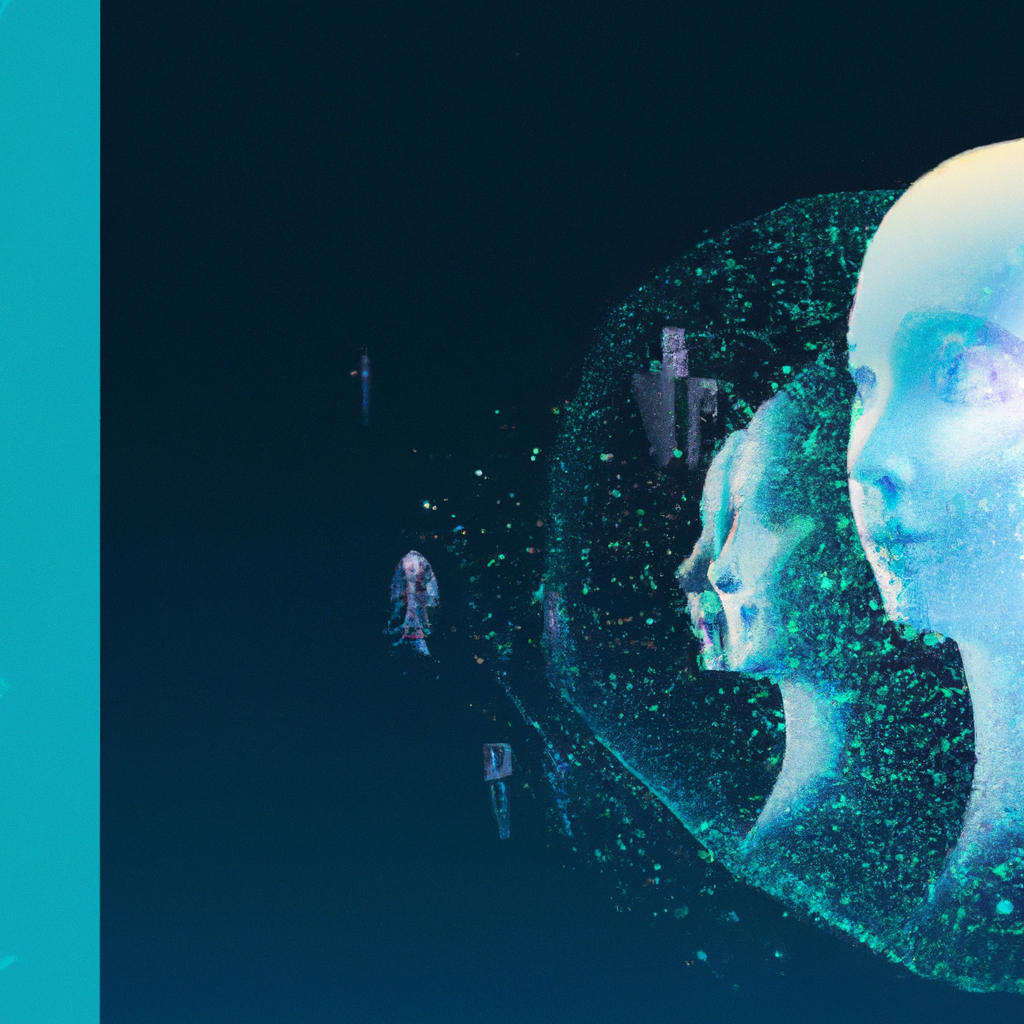Imagine having a conversation with a chatbot that not only understands your words, but also grasps the subtle nuances and context behind them. In the world of AI chatbot builders, this dream is becoming a reality. With advanced algorithms and machine learning capabilities, these builders are revolutionizing the way chatbots interact with users. By enhancing chatbots’ contextual awareness, they are bridging the gap between human-like conversations and artificial intelligence. Find out how these builders are transforming the chatbot landscape and redefining our expectations in this fascinating article.
Understanding Contextual Awareness in Chatbots
Defining Contextual Awareness
Contextual awareness in chatbots refers to the ability of these AI-powered conversational agents to understand and interpret the context of a conversation. It involves comprehending the user’s previous messages, anticipating their needs, and responding accordingly. This understanding goes beyond the strict interpretation of isolated words or phrases but takes into account the broader context in which the conversation is occurring.
Importance of Contextual Awareness in Chatbots
Contextual awareness is critical for chatbots to provide meaningful and relevant responses to user queries. Without the ability to understand the context, chatbots may generate inaccurate or irrelevant answers, leading to frustrating user experiences. By understanding the context, chatbots can maintain a coherent conversation flow, better comprehend user intents, and provide more accurate and personalized responses. This enables chatbots to deliver high-quality customer service, improve user satisfaction, and increase overall efficiency.
Limitations of Traditional Chatbots
Lack of Contextual Understanding
Traditional chatbots often lack the ability to understand the context of a conversation. They typically rely on simple keyword matching or rule-based systems, which limit their comprehension abilities. As a result, these chatbots fail to grasp the context in which a user’s message is conveyed, leading to generic and impersonal responses.
Difficulty in Handling Ambiguity
Ambiguity is inherent in human language, with words and phrases having multiple meanings depending on the context. Traditional chatbots struggle with this ambiguity, often interpreting messages in a literal sense and providing inaccurate responses. Consequently, users may need to rephrase or repeat their queries, leading to frustration and a poor user experience.
Inability to Provide Personalized Responses
Traditional chatbots lack the capability to provide personalized responses tailored to individual users. They often treat each conversation as an isolated interaction, without considering the user’s preferences, history, or past interactions. This impersonal approach hinders the chatbot’s ability to understand the user’s needs and provide relevant recommendations or solutions.

Introduction to AI Chatbot Builders
Definition and Functionality
AI chatbot builders are platforms or tools that assist in the development and deployment of chatbots with advanced AI capabilities. These builders leverage technologies such as machine learning and Natural language processing (NLP) to enhance the chatbot’s understanding and responsiveness. They provide developers with pre-built components, APIs, and frameworks to create chatbots capable of contextually aware conversations.
Use of Machine Learning and Natural Language Processing
AI chatbot builders utilize machine learning algorithms and NLP techniques to improve the contextual awareness of chatbots. Machine learning enables the chatbot to learn from user interactions and adapt its responses accordingly. NLP empowers the chatbot to analyze and understand the meaning behind user input, including intent recognition, entity extraction, and sentiment analysis.
Improving Contextual Awareness through AI Chatbot Builders
1. Incorporating Machine Learning Techniques
AI chatbot builders leverage machine learning techniques such as supervised learning, reinforcement learning, and deep learning to enhance the chatbot’s contextual understanding. These techniques enable the chatbot to learn from vast amounts of data and improve its ability to interpret user intent and provide appropriate responses. By continuously analyzing and adapting to new data, the chatbot can refine its understanding of context over time.
2. Utilizing Natural Language Processing
AI chatbot builders utilize NLP algorithms to process and comprehend user input in a more sophisticated manner. NLP techniques such as intent recognition, entity extraction, and named entity recognition help the chatbot understand the meaning behind user queries. Furthermore, sentiment analysis allows the chatbot to gauge the user’s emotions and tailor responses accordingly, enhancing the overall conversational experience.
3. Enhancing User Profiling Capabilities
AI chatbot builders allow developers to incorporate user profiling capabilities, enabling the chatbot to recognize and remember individual users’ preferences. By storing and analyzing user data, such as previous interactions, purchase history, and demographic information, the chatbot can deliver personalized responses and recommendations. This enhances the chatbot’s ability to understand user preferences and provide tailored solutions.

Benefits of AI Chatbot Builders Enhancing Contextual Awareness
1. Enhanced User Experience
By enhancing contextual awareness, AI chatbot builders significantly improve the user experience. Contextually aware chatbots can maintain coherent and engaging conversations, understanding the user’s queries, and providing relevant responses. This creates a more natural and seamless interaction, making users feel understood and satisfied with the chatbot’s capabilities.
2. Increased Efficiency and Accuracy
The contextual understanding facilitated by AI chatbot builders leads to increased efficiency and accuracy in responses. Chatbots can accurately interpret user intents, avoiding the need for users to repeat or rephrase their queries. This reduces the time and effort required for both the user and the chatbot, resulting in quicker and more efficient problem resolution.
3. Improved Personalization
AI chatbot builders allow developers to incorporate user profiling capabilities, enabling chatbots to provide personalized responses. By understanding user preferences, history, and behaviors, chatbots can tailor their recommendations and solutions to individual users. This personalization creates a more relevant and engaging experience for users, strengthening their connection with the chatbot.
4. Handling Ambiguity and Complex Queries
Contextual awareness provided by AI chatbot builders enables chatbots to better handle ambiguity and complex queries. By understanding the broader context of a conversation, chatbots can disambiguate user queries, determining the intended meaning behind ambiguous words or phrases. Additionally, chatbots can comprehend and respond to more complex inquiries, handling multi-turn conversations with ease.
Challenges in Developing Contextually Aware Chatbots
1. Dataset Limitations
Developing contextually aware chatbots relies heavily on training data, which may be limited or biased. The availability of high-quality, diverse datasets that capture a wide range of contexts and user intents is crucial for building effective chatbots. Obtaining and curating such datasets can be challenging, as it requires substantial resources and efforts.
2. Ethical Considerations
Contextually aware chatbots need to adhere to ethical guidelines regarding privacy, security, and unbiased decision-making. The usage of user data and the potential for manipulating user behavior raise ethical considerations that developers must address. Striking a balance between personalization and privacy is essential to ensure the ethical deployment of contextually aware chatbots.
3. System Complexity and Integration
Developing contextually aware chatbots requires integrating multiple technologies and components, making the system inherently complex. Combining machine learning, NLP algorithms, and user profiling capabilities requires expertise in various disciplines. Ensuring seamless integration and efficient interoperability of these components can pose challenges to developers.

Case Studies: Successful Implementation of AI Chatbot Builders
1. Customer Support Chatbots
Many companies have successfully implemented AI chatbot builders to enhance the contextual awareness of their customer support chatbots. These chatbots can understand customer queries, identify the underlying intent, and provide appropriate and personalized responses. By leveraging AI chatbot builders, companies have improved customer satisfaction, reduced response times, and increased the efficiency of their support operations.
2. Virtual Assistants
Virtual assistants, such as Amazon’s Alexa and Google Assistant, utilize AI chatbot builders to enhance their contextual awareness. These virtual assistants can understand and respond to user commands, answer queries, and perform tasks. By enhancing their contextual understanding, virtual assistants provide users with more relevant and personalized assistance, creating a seamless and intuitive user experience.
Future Trends in Enhancing Contextual Awareness
1. Advancements in Deep Learning
Advancements in deep learning techniques, including transformers and neural networks, hold promise for further enhancing the contextual awareness of chatbots. These techniques allow chatbots to better understand the nuances of human conversation, capture long-term dependencies, and generate more contextually relevant responses. As research in deep learning continues to progress, chatbots’ contextual understanding is expected to improve significantly.
2. Contextual Embeddings and Representations
Contextual embeddings and representations enable chatbots to encode and process the conversation context more effectively. These techniques capture the contextual information from previous messages and incorporate it into the current conversation. By leveraging contextual embeddings, chatbots can better understand user intents and generate more contextually aware responses.
3. Multi-modal Learning
The integration of visual and textual information through multi-modal learning can enhance chatbots’ contextual awareness. By processing both visual and textual cues, chatbots can better understand the context in which the conversation is occurring. This integration allows chatbots to interpret images, videos, and other visual content, enabling more comprehensive and meaningful interactions.

Conclusion
Contextual awareness is crucial for chatbots to provide effective and personalized responses to user queries. AI chatbot builders play a vital role in enhancing chatbots’ contextual understanding, leveraging machine learning and NLP techniques. By incorporating these builders, chatbots can improve user experiences, increase efficiency and accuracy, and handle ambiguity and complex queries. While challenges exist in developing contextually aware chatbots, successful case studies illustrate the benefits of incorporating AI chatbot builders. As future trends advance in deep learning, contextual embeddings, and multi-modal learning, the potential for chatbots with enhanced contextual awareness continues to grow.
